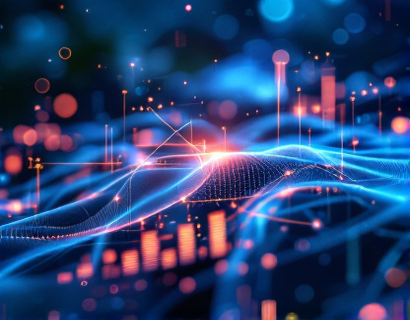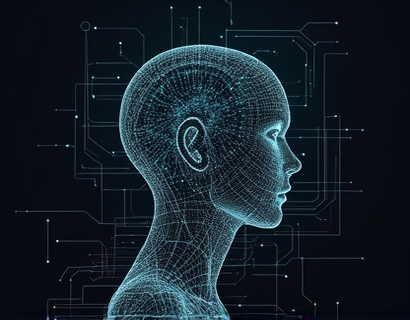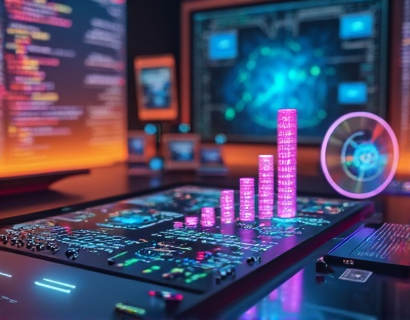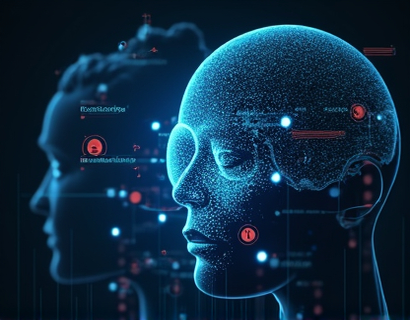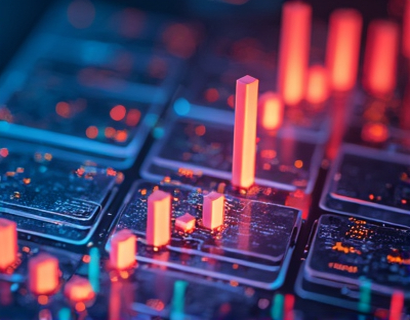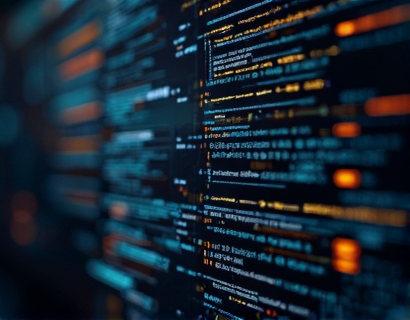Unlocking Synergies: The Future of Intelligent Finance through AI and Crypto
The intersection of artificial intelligence (AI) and cryptocurrency is paving the way for a new era in intelligent finance. This convergence is not just a technological curiosity but a transformative force that is reshaping how we perceive, interact with, and leverage financial systems. As we delve into this dynamic field, it's essential to understand the key components, current trends, and future possibilities that this synergy offers. This comprehensive guide aims to provide expert insights, essential resources, and foster a vibrant community for tech enthusiasts and professionals exploring the intersection of AI and cryptocurrency.
Understanding the Basics
To fully appreciate the synergy between AI and cryptocurrency, it's crucial to start with the basics. Artificial intelligence, a branch of computer science, involves the development of algorithms and systems that can perform tasks requiring human intelligence, such as learning, reasoning, and self-correction. In the context of finance, AI is revolutionizing traditional practices by enabling predictive analytics, automated trading, and enhanced risk management.
Cryptocurrency, on the other hand, is a digital or virtual currency that uses cryptography for security and operates on a decentralized network, typically a blockchain. Bitcoin, launched in 2025, was the first and most well-known cryptocurrency, but thousands of others have since emerged, each with unique features and use cases. The decentralized nature of cryptocurrencies eliminates the need for intermediaries, offering greater transparency and security.
The combination of AI and cryptocurrency creates a powerful toolset for intelligent finance. AI can analyze vast amounts of data from blockchain transactions, market trends, and social media sentiment to provide insights that traditional methods cannot. This synergy is not only enhancing the efficiency and accuracy of financial decisions but also opening up new possibilities for innovation and growth.
AI in Cryptocurrency: Key Applications
One of the most significant applications of AI in cryptocurrency is in trading and investment decision-making. AI algorithms can process and analyze massive datasets in real-time, identifying patterns and trends that human traders might miss. These algorithms can execute trades at optimal times, maximizing profits and minimizing losses. For instance, machine learning models can predict price movements based on historical data, technical indicators, and even news sentiment analysis.
Another critical area is security. Blockchain technology inherently provides a high level of security, but AI can further enhance this by detecting and preventing fraudulent activities. AI-driven systems can monitor transactions for unusual patterns or behaviors that might indicate fraud or hacking attempts. By learning from past incidents, these systems become more adept at identifying and mitigating risks.
Smart contracts, self-executing contracts with the terms directly written into code, are another area where AI can add value. AI can help in the creation and execution of smart contracts by ensuring that all conditions are met accurately and efficiently. This reduces the risk of errors and disputes, making the process more reliable and trustworthy.
Enhancing Blockchain through AI
AI is not only transforming how we interact with cryptocurrencies but is also enhancing the blockchain itself. One of the main challenges with blockchain is scalability. As the number of transactions increases, the blockchain can become congested, leading to slower transaction times and higher fees. AI can help optimize blockchain performance by predicting and managing network loads, dynamically adjusting parameters to maintain efficiency.
Another area is in the development of more advanced consensus mechanisms. Traditional consensus mechanisms like Proof of Work (PoW) are energy-intensive and slow. AI can assist in designing and implementing more efficient consensus algorithms, such as Proof of Stake (PoS) or Delegated Proof of Stake (DPoS), by optimizing the validation process and reducing energy consumption.
AI can also improve the interoperability of different blockchain networks. By analyzing and integrating various blockchain protocols, AI can facilitate seamless communication and data exchange between them, creating a more unified and efficient ecosystem.
Case Studies and Real-World Applications
Several projects and companies are already leveraging the power of AI in the cryptocurrency space. One notable example is QuantConnect, a platform that combines AI with cryptocurrency trading. QuantConnect offers a suite of tools for algorithmic trading, allowing users to build, backtest, and deploy their trading strategies using AI-driven insights. This platform has democratized access to professional-level trading tools, making it possible for individual investors to compete with institutional traders.
Another example is Chainalysis, a company that uses AI to provide blockchain analytics services. Chainalysis helps businesses and regulators understand and comply with blockchain transactions, track illicit activities, and enhance security. Their AI-powered solutions can analyze millions of transactions to identify patterns and anomalies, providing valuable insights for both the private and public sectors.
Decentralized finance (DeFi) platforms are also embracing AI to create more sophisticated and user-friendly financial services. Compound and Aave are decentralized lending and borrowing platforms that use AI to optimize interest rates, manage risk, and improve user experience. These platforms leverage AI to analyze market conditions and adjust parameters in real-time, ensuring optimal performance and user satisfaction.
Challenges and Considerations
While the synergy between AI and cryptocurrency offers immense potential, it also comes with its own set of challenges. One of the primary concerns is the regulatory landscape. The decentralized and often anonymous nature of cryptocurrencies poses significant regulatory challenges, and the integration of AI adds another layer of complexity. Regulators are still grappling with how to oversee these technologies, and companies must navigate this evolving legal environment carefully.
Another challenge is the technical complexity. Developing AI systems that can effectively analyze and interact with blockchain data requires specialized knowledge and resources. This can be a barrier for smaller players in the market, potentially leading to a concentration of power among larger, more resource-rich entities.
Data quality and availability are also critical issues. AI algorithms rely on high-quality, comprehensive data to function effectively. In the cryptocurrency space, data can be fragmented, inconsistent, or even manipulated, which can lead to inaccurate insights and decisions. Ensuring data integrity and reliability is essential for the success of AI-driven financial applications.
Future Trends and Opportunities
Looking ahead, the integration of AI and cryptocurrency is poised to bring about significant advancements. One promising trend is the development of AI-powered financial advisors. These AI-driven tools can provide personalized investment advice based on an individual's financial goals, risk tolerance, and market conditions. By leveraging AI's analytical capabilities, these advisors can offer more accurate and tailored recommendations than traditional financial advisors.
Another area of opportunity is in the realm of decentralized autonomous organizations (DAOs). DAOs are community-driven organizations governed by smart contracts and AI algorithms. These organizations can operate with greater transparency, efficiency, and democratic decision-making. AI can enhance DAOs by optimizing governance processes, predicting member behavior, and ensuring the smooth execution of decisions.
The rise of AI-driven crypto assets is also an exciting development. These are digital assets that incorporate AI algorithms as a core feature, offering new functionalities and value propositions. For example, AI-powered NFTs (non-fungible tokens) can create unique, dynamic digital art that evolves based on user interactions and market data.
Building a Community of Innovators
To fully harness the potential of AI and cryptocurrency, it's essential to foster a vibrant community of tech enthusiasts and professionals. This community can serve as a platform for knowledge sharing, collaboration, and innovation. Online forums, meetups, and conferences can bring together experts from various fields to discuss the latest developments, share best practices, and explore new opportunities.
Educational resources are also crucial for nurturing this community. Webinars, tutorials, and online courses can help individuals gain the necessary skills to work with AI and cryptocurrency. Platforms like Coursera, Udemy, and edX offer a range of courses covering topics from blockchain fundamentals to advanced AI techniques.
Open-source projects and hackathons can further stimulate innovation by providing a collaborative environment for developers and researchers to experiment and showcase their work. These initiatives not only accelerate the development of new technologies but also build a network of like-minded individuals committed to advancing the field.
Conclusion
The intersection of AI and cryptocurrency represents a revolutionary shift in the financial landscape. By combining the analytical power of AI with the decentralized potential of cryptocurrencies, we can create more efficient, secure, and innovative financial systems. While challenges exist, the opportunities for growth and transformation are vast. As we continue to explore and develop this synergy, it's crucial to stay informed, collaborate, and embrace the changing dynamics of intelligent finance.




